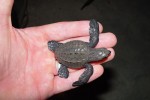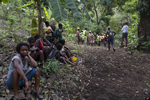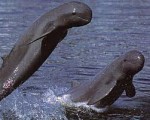Salvadorans Incubate Hope for Sea Turtles | Salvadoreños incuban esperanza para tortugas marinas
By Edgardo Ayala, Tierramerica via IPS. El Salvador’s Jiquilisco Bay, a tiny hidden corner of the Pacific Ocean and home to the country’s longest stretch of mangrove forests, is becoming a haven for endangered sea turtles. (English | Spanish)
Continue reading →






